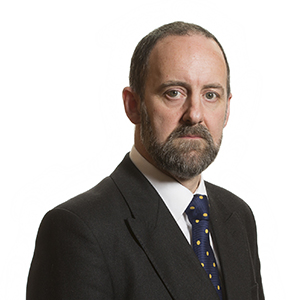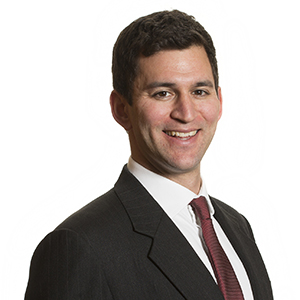Disruptive forces are reshaping dispute resolution processes. Businesses are being encouraged to think as radically as possible about harnessing such forces, through the use of technology, to generate both improved cost structures, and better client-focussed outcomes.
These were the issues discussed by a panel of legal and business speakers at Womble Bond Dickinson’s event on 28 March at the British Library. Chaired by the highly respected legal commentator, Joshua Rozenberg, the panel took part in a highly interactive debate, which looked at a number of key questions about the use of technology in the dispute resolution process. Client perspectives were central to the discussion, introduced by Simon Lewis of Womble Bond Dickinson.
Use of technology
Rozenberg asked where technology could be used to improve the dispute resolution process. Examples offered ranged from the creation of virtual courtrooms, to streamlining the discovery and/or disclosure process, to the use of further data analytics, or various combinations of the above.
Dan Kayne, general counsel, Routes, at Network Rail Infrastructure, said: “There is a real appetite to take this issue on board,” although he also noted using technology was “just one part of a much wider challenge,” adding that, while clients were aware of the opportunities technology presented, and relied upon external law firms to assist them with those opportunities, “there is some uncertainty as to how firms should… improve the efficiency of the dispute resolution process,” which was, itself, a narrow focus; firms had “yet to fully grasp what it is clients are looking for.”
Sir Robert Akenhead, formerly head of the Technology and Construction Court (TCC), offered his own views, noting the use of document management systems, document investigation and analysis tools, video conferencing for witness production or procedural hearings, as well as the digital recording of submissions and evidence, and electronic filing, for example, in the TCC itself.
Those sentiments were shared by Richard Collins, a disputes partner at Womble Bond Dickinson UK, who noted strong views within the audience that technology should be used to help reduce the costs of disclosure processes, saying: “That’s an easy win for a part of the litigation process that involves the most time-intensive human effort. In the interest of efficiency, it’s clearly beneficial to us to be able to make the most of that process.”
From a US perspective, Ellen Gregg, a partner in Womble Bond Dickinson US, explained how the firm had developed its own procedures to establish, with client support, a centrally accessible pool of information available to all law firms working with that client, thanks to the assertive use of technology.
She said: “By sharing the resource outside one law firm, on behalf of the client, the connectivity of technology allowed us to effectively create a virtual law firm – enhancing communication and co-ordination for clients."
“The result means we can implement defence strategies very effectively, distribute important case and litigation information, and provide a master calendar system used for deadlines and court timetables between all the relevant law firms”, she added.
Derrick Logan, Senior Solutions Architect, Epiq, endorsed this approach, noting that the best use of technology “is where the corporate culture of client supports their beliefs, and they then select the pieces of technology they want to use, as part of a collaboration which drives efficiency.”
Artificial intelligence
The discussion then moved on to artificial intelligence, or AI. Logan noted that the use of AI in law was “a natural progression” of mainstream developments of technology harnessed for client benefit.
There were, however, limitations; while AI could be of great assistance; it was far from replacing human knowledge. Gregg’s view was similarly measured. She said: “AI enables us to analyse information differently in a predictive way, not necessarily to make decisions for us but to better inform the decisions we have to make, so we can start understanding where the real cost points are, so that we can make better decisions.”
Collins agreed, saying: “We need to understand how AI can apply to the work that we do and why it’s going to be beneficial for clients and indeed for the business itself to understand what that means in practice.” That point was enthusiastically received by Logan, who said he was “a big supporter [of law firms] adopting technology as early and often as possible.”
Akenhead suggested that what clients most valued was the judgment of the professionals working in the justice system, be they solicitors, counsel, arbitrators or adjudicators. “We are,” he said, “a long way off being able to feed all of the facts into the machine and it coming up with an answer.” From the client’s perspective, AI posed a challenge to law firms, noted Kayne. While the concept was heavily covered in the media, the legal market, he said, “struggles to appreciate what it might be able to do for us”.
“The incentive to change which is going to be the key driver for law firms just simply isn’t there in the way the law firm model is currently operated,” he also argued.
“For me, as a client, I want to see things done better, faster, smarter and that would be cheaper as a result,” said Kayne. “Does it feature enough in our conversations right now? No. Should it? Yes.”
The costs of dispute resolution
Rozenberg then smoothly moved the discussion on to what should be done to control the costs of dispute resolution. Akenhead outlined his
experience both as a judge on the TCC and as an arbitrator, noting that the active management of timetables, in his court experience, had helped to reduce costs and encourage early settlement.
With less sanctions open to arbitrators, given arbitration is a consensual process, the same incentives did not apply, although Akenhead noted that arbitrators could encourage the parties to move expeditiously.
In either case, however, he said: "Case management is a key - probably the single most important key - to control the cost of dispute resolution.” That sentiment struck a chord with Collins, who said: “It’s critical that judges get hold of a case at the earliest possible opportunity and drive it through to a conclusion.” Collins added: “The rules we have are effective, but the courts, and parties, need to be much tougher on sanctions for failure to meet deadlines.”
Kayne felt: “All parts of the industry need to play their part, and there is an absolute need to speed the litigation process up,” in managing costs efficiently. He added clients “could be far better in the way we manage our own documentation internally,” adding improvements in clients’ instruction of lawyers, and greater clarity on the scope of those instructions, would also assist.
Again, Gregg offered technology as a solution, saying “AI can play a role in understanding information better than we used to, including in analysing trends and so enabling you to be more cost-effective in making critical risk decisions, while leaving the strategic decision to you to make”.
Kayne encouraged external counsel to be more definite, arguing that while in-house lawyers wanted to balance certainty and speed, he noted: “We don’t want to end up in court, as we also have relationships to protect. That means we want lawyers to be more definitive in their advice – in helping us make an informed decision as to whether to proceed or not,” something understood by fellow panel members.
What people want
Rozenberg then asked the audience if they agreed or disagreed with the proposition that existing dispute resolution processes provided what people want.
A majority said that the current system didn’t do so; solutions offered by the panel included a greater focus on specialisation, as well as encouraging better and earlier analysis of the issues once a dispute has started. Akenhead offered examples from his TCC experience, urging lawyers to “concentrate on what’s really at issue, rather than peripheral matters,” while also urging reform of the existing law of discovery.
Logan suggested that greater co-operation and collaboration, as well as enhanced use of technology, would enhance existing dispute resolution processes, a sentiment shared by Collins, who cited the development of co-operative case management mechanisms, which helped to facilitate the parties’ engagement at the earliest possible stage, as one solution.
Collins indicated: “The issues in the case, the cost of the process and the nature of the process itself, should all focus on what it is that needs to be resolved in any given dispute, through a process that provides a certain and fair and workable outcome, if we’re going to deliver the results that we think the client wants and to have confidence in the system itself.”
Kayne suggested that clients needed to find ways of resolving disputes earlier; saying: “There is real emphasis on business making the most of the opportunity to settle disputes early, particularly in industries where relationships are ongoing.”
“To end up in a fractious relationship where disputes which inevitably are going to arise are dealt with such animosity creates a longer term business problem,” he added, saying: “We need to find a way to maintain relationships whilst being able to have our disputes resolved in whichever way we choose to have them resolved.”
Gregg summed up the views of many in acknowledging that while final deadlines helped “to concentrate the mind,” it was “expensive to settle on the courthouse steps, having paid for everything else up-front.”
Like Collins, she urged reform, saying: “It should be easier to get to that point earlier, in a much more efficient and cost conscious way. To the extent we can shorten, and streamline, the process so that substantial justice is done, using pragmatic systems that facilitate quick dispute resolution, like eBay’s own settlement mechanisms, then technology can and should play a part.”
Proposals for change
The event closed with consideration on how the panellists would create new effective dispute resolution processes. A majority of the audience considered that dispute resolution worked effectively; Collins noted: “Everyone makes the perfectly sensible point that we have a good system but it takes too long to deliver an outcome.”
Logan suggested that corporations should be incentivised to remove the costs of litigation from the process, including repetitive processes, like discovery. “By investing in the beginning of the process, and making that a priority, we save time for the serious legal issues,” Logan argued, saying he would also “focus on shortening the entire life cycle of a dispute,” thus making the whole process more efficient.
Akenhead, as a former judge, suggested that clients should “start running their documents management systems in a way that is readily accessible, if there are problems,” stressing that better organisational management of evidence would help ensure disputes were resolved faster, by common evidence being shared, where appropriate, at an earlier stage.
That – and much earlier use of mediation – would help, something Kayne agreed with, with the in-house lawyer suggesting “speed is really important,” adding: “Get it done effectively and quickly and we get a result that we are generally going to live with.”
Kayne suggested project management was important in litigation, detailing the necessary milestones, which would enable “businesses [to] make decisions about where in that process you want to change your litigation strategy.”
That approach chimed with Gregg, who said lawyers needed to “map out the process from end to end, and to look for intersection points where
you can either drive out cost, automate matters, delegate responsibility, and to focus the bespoke process on the milestones for key decisions and legal judgment.”
Speed was also a virtue to her, noting “To put it simply, if you’re going to lose you want to learn you’re going lose early. If you’re going to win, you want to feel like you’re going to be a winner early.”
To Collins, without requiring root and branch reform, dispute resolution needed to “move much more rapidly to the decision-making phases, while promoting the strengths and values of the current system, namely, certainty, quality of justice, quality of decision making, robustness of reasoning – which is all things that we should not lose sight of.”
He concluded by saying “Whatever we do going forward, we must not dilute the quality of the justice that we’re able to obtain; although if we are able to obtain it more quickly, perhaps we will all be happier.”







